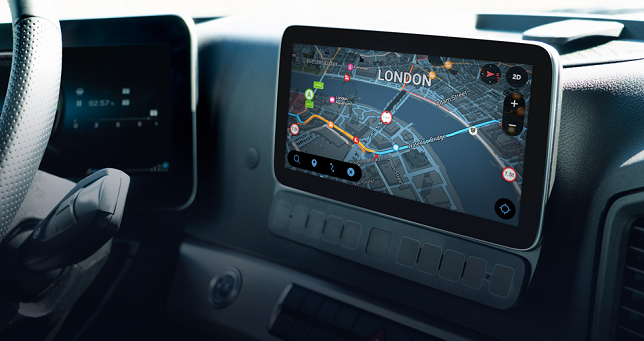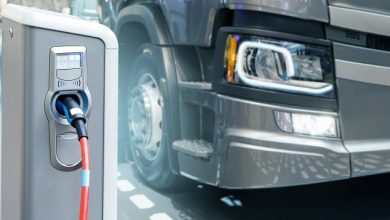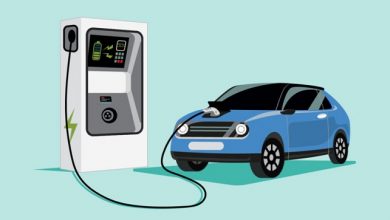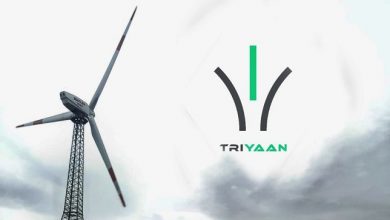Charging: How to overcome a key speedbump on the road to electric future

The electric revolution in road transportation is underway. Even though internal combustion engines (ICE) have powered vehicles almost exclusively for the past 130+ years, electric motors now seem to be finally taking over. Yet, an essential limitation still flies under the radar.
EVs already overtaking ICEs
Strides in battery technology along with the greater simplicity of electric motors (less parts and complex integrated systems; easier to assemble and service), not to mention their environmental benefits, are the chief factors behind their speedy rise over the last five years.
So speedy in fact, that the number of new fully electric and plug-in hybrid cars registered in the European Union has reached over 20% and exceeded diesel-powered cars for the first time in August 2021.
With petrol cars holding about 60% of the European market share, electric vehicles (EV) still have a long way to go. But in 2011, diesel accounted for 55% of new car sales in Europe. Last August? Barely 20%. And petrol car sales have also already started to decline.
Truck manufacturers join the party
Electric power seems to be prevailing not only on the expense of ICEs in passenger cars. Clean hydrogen has also been pushed as the only sustainable green solution for long-distance trucking – based on claims that batteries won’t be able to provide the power and driving range required.
However, one of the world’s largest truck manufacturers, Scania, has stated last year that hydrogen will be too inefficient and expensive for long-haul transportation. The company has already produced both electric and hydrogen vehicles. Currently, it is the only manufacturer with hydrogen-powered commercial vehicles in operations with customers.
“Going forward the use of hydrogen will be limited, since three times as much renewable electricity is needed to power a hydrogen truck compared to a battery electric truck. A great deal of energy is lost in the production, distribution, and conversion back to electricity. Repair and maintenance also need to be considered. The cost for a hydrogen vehicle will be higher than for a battery electric vehicle as its systems are more complex, such as an extensive cooling system. Furthermore, hydrogen is an explosive gas which requires more maintenance to ensure safety,” Scania explained in a statement.
In addition, battery technology is fast advancing, with charging time, cycles, and economics per kilogram improving rapidly. “This means that electric solutions will become more cost effective, primarily in repetitive and predictable applications. They will gradually overtake Scania’s industry-leading fossil and biofuel-powered solutions,“ the company added.
A truly global push – but with a twist
EVs have been strongly backed also at last November’s COP26 in Glasgow, during the summit’s Transport Day. A group of more than 100 countries, states, cities, and companies have committed to phasing out petrol and diesel car sales by 2040, some even as soon as 2035.
Major signatories from the automotive industry include Ford, General Motors, Volvo, Mercedes-Benz, Jaguar Land Rover and BYD Co. Governments of the UK, Canada New Zealand, Mexico, India and numerous European countries, individual cities such as Buenos Aires and Rio de Janeiro, states of California and New York, as well as major fleet owners and corporations with large purchasing power have declared their commitment.
With all of the above going electromobility’s way, there’s one significant bottleneck that could hold up and spread doubt about the adoption of EVs: Where, when, and for how much will all these cars get charged?
Expanding the charging network
The shift needs to take into account much more than just the vehicles themselves. And not even many of those looking to purchase their very first electric car are sufficiently aware of the challenge. Governments are only waking up to the problem and manufacturers and charging providers have been all approaching it on their own terms – so far.
There are approximately 1.3 million public EV charging points around the globe at the moment. Yet if the world aims to reach carbon neutrality halfway through the 21st century, by 2030 two thirds of the global car market must consist of EV sales. And then that number has to grow to 100% by 2050.
According to an estimate by the International Energy Agency (IEA) to satisfy this charging demand, 40 million public charging points would be needed. That translates to a $90 billion investment every year until the end of the current decade. And five times as many to achieve carbon neutrality 20 years later.
Bloomberg predicts that in case of a slower scenario, in which EVs reach just under a third of all vehicles sold by 2030, approximately $600 billion investment in charging infrastructure would still be required by 2040. That would result in a total of 24 million public charging points around the globe. Although both estimates assume that virtually all of these chargers will be operational at all times, which in real-world conditions is rarely – if ever – the case.
“Charge Wars” on the horizon?
This ties in directly with 4 out of top 5 major customer concerns when considering an EV purchase. In two words: charging anxiety – the fear of running out of power. The good news is that most of these concerns can be resolved by providing drivers with proper information regarding their available driving range, the compatibility and availability of charging points, and by tailoring each route to the specific electric vehicle.
So what exactly have been the 5 most frequent concerns of potential EV buyers in 2021? According to a research by AlixPartners it has been:
- Battery driving range
- Not enough charging points
- Higher cost compared to traditional vehicles
- Length of charging
- Unable to charge the vehicle at home
EVs can be charged overnight at home or during the day at a workplace (if employers install chargers). However, this will only get us so far. As EV ownership spreads from wealthier households to people living in flats or housing without their own parking space, a public charging network becomes crucial. Otherwise EVs would be virtually useless for a large portion of the population.
The road ahead
Public charging points come in different shapes and sizes, equipped with various charging technology. A common kind is curbside charging, where cars can park and top up overnight. Then there is “destination” charging, becoming increasingly popular at car parks by shopping centers, restaurants, cinemas, and so on. And finally, fast charging points are vital on main roads for making long inter-city trips as well as in cities, when drivers need to extend their range fast.
Building up this network won’t happen overnight. The need to co-ordinate with and get permission from many parties adds to the time required. Furthermore, the market is rather fragmented, dominated mostly by three different kinds of business approaches.
One is the vertically integrated automakers, such as Tesla, which are able to build their own charging network. Then there are the established energy giants, fearful of losing revenue streams from petrol stations – e.g. Royal Dutch Shell which plans to roll out half a million charging points around the world by 2025. And finally, there are specialist charging businesses like ChargePoint or EVBox. However, these companies have yet to find business models that will reliably produce profit even after governments cut their current subsidies.
Ultimately, most of potential EV owners are initially unaware of the scope of challenges that charging presents. They simply expect to re-charge whenever required. However, once they understand the charging requirements, market fragmentation, the still-developing infrastructure, and charging anxiety become major roadblocks en route to mass EV adoption.
Navigating towards a solution
Yet automakers can provide a built-in solution that will provide peace of mind and always help drivers find a fitting and available charger.
This solution’s foundation is a navigation that includes an always up-to-date network of charging points and utilizes real-time data from the vehicle itself (telematics) to calculate the optimal routes, including charging stops.
With a few exceptions, many of today’s EVs still use the same or only slightly modified software as ICE cars. The route is often calculated assuming a fully charged battery and does not take into consideration how the driver actually drives, external factors like the weather and traffic situation, or whether compatible chargers are available along the way.
These are the 5 key factors a reliable navigation solution of any electric car should take into account:
- Essential car and battery information: Essential vehicle and battery details; e.g. power output, battery capacity, age, etc.
- Charging connectivity: What modes (AC/DC) and types of adapters can be used to charge the vehicle?
- Real-time charging network availability: Where can the car get charged along the way and is the chosen charger available right now or used by another vehicle?
- Car telematics and driver behavior: Actual power consumption, driving style based on real-time telemetry and historical data.
- External information affecting the driving experience: Weather, traffic, charging costs, etc.
Sygic offers a proven navigation solution that integrates directly with the electric vehicles’ telematic data to eliminate charging anxiety and bring a premium driving experience.
Automakers can integrate Sygic GPS Navigation SDK, including a dedicated EV Mode, with any type of electric vehicle – from passenger cars and light commercial vehicles (LCVs) to heavy-duty trucks (incorporating truck-specific parameters and restrictions).
Accessible directly from the car’s infotainment dashboard, it further eliminates the need to reach for a phone while behind the wheel. The look & feel of the application can be also easily tailored thanks to predefined templates. Its public charging points network also provides real-time insight on charger availability and can be extended with private charging points as well.
Accelerate the EV revolution and make charging anxiety history.
Author:

Martin Elexa
Business Development Executive Automotive Dept
Sygic a.s.
Sygic has been actively involved in the global automotive market since 2004. Martin joined the company in 2017 aiming to enlarge the global footprint of navigation services provided by Sygic to various OEMs and Tier1s in the segment of embedded and smartphone navigation for passanger vehicles, trucks and 2-wheelers. In the most recent years his focus has heavily shifted towards the segment of EV and its solutions.
Published in Telematics Wire





